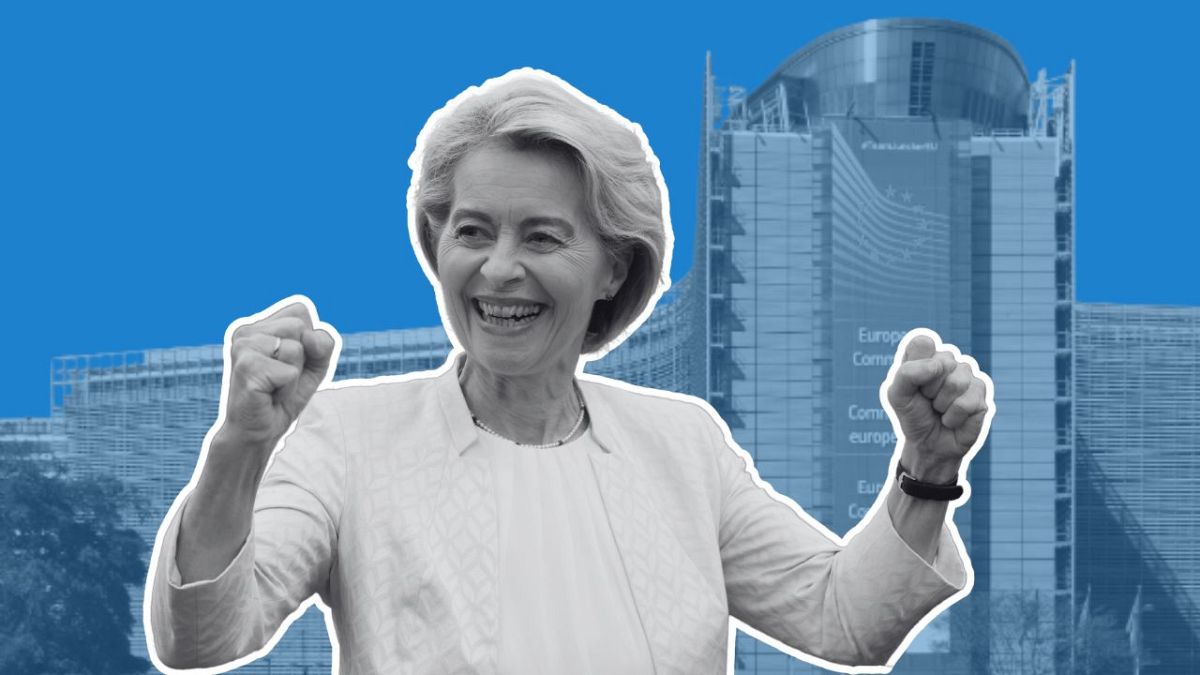Europe
How to navigate the European Commission’s new chain of command

How Ursula von der Leyen Reshaped the European Commission in Her Own Image
Introduction: A Quiet Revolution in Brussels
While many Europeans were still recovering from holiday celebrations in early January, a significant transformation took place in Brussels. Ursula von der Leyen, President of the European Commission, quietly introduced a radical restructuring of the EU’s executive body. The changes, which went largely unnoticed by the public, reorganized the Commission into “project groups” aimed at improving coordination and decision-making. This shift marks a departure from the traditional bureaucratic structure, where commissioners and directorates-general often clashed over responsibilities. The new system not only alters how the Commission operates but also reveals a clear power struggle, with some commissioners rising to prominence while others are sidelined. For policymakers, lobbyists, and citizens seeking to navigate the EU’s complex power dynamics, understanding this new structure is crucial to avoiding missteps in the next five years.
The New Structure: Project Groups and Their Purpose
The Commission’s new project groups are described as “flexible tools to ensure internal coordination,” a response to the long-standing challenge of overlapping competencies among commissioners and directorates-general. Previously, the Commission relied on formal mechanisms like the inter-service reviewing process and the oversight of the powerful Secretary-General (SecGen) to maintain coherence. However, these systems often proved inadequate, as seen during the last mandate when certain directorates, such as DG SANTE (responsible for health and food safety), were overwhelmed by the dual challenges of tackling the pandemic and reforming pharmaceutical and pesticide regulations. The new approach abandons the traditional organization by broad thematic areas in favor of specific projects and priority dossiers.
The project groups are led by designated commissioners and operate with a one-year renewable mandate. While the official hierarchy remains intact, with Executive Vice Presidents (EVPs) at the top, the workflow has undergone a dramatic shift. For example, agriculture, previously overseen by EVP Frans Timmermans under the Green Deal, now falls under Commissioner Christophe Hansen. Similarly, Lithuanian Commissioner Andrius Kubilius, a political ally of von der Leyen, has taken charge of shaping the European Defence Union, a responsibility previously held by the EU’s top diplomat, Josep Borrell. These changes offer revealing insights into who truly wields power in Brussels.
Power Dynamics: Winners and Losers in the Restructuring
The new project groups have reshuffled the Commission’s power dynamics, elevating some commissioners to key roles while relegating others to the sidelines. French EVP Stéphane Séjourné has emerged as one of the most influential figures, sitting on ten of the 14 project groups and co-chairing the Clean Industrial Deal group. His involvement underscores his importance in driving the Commission’s priorities, including supporting industry and advancing energy access.
However, not all commissioners have fared as well. Valdis Dombrovskis, once a dominant figure in the Commission, has seen his influence diminished. While he continues to lead the influential Directorate-General for Economic and Financial Affairs (DG ECFIN), he does not chair any project groups, though he participates in several. Meanwhile, Raffaele Fitto, an EVP from Italy, has been notably sidelined, failing to lead any of the new groups despite his senior title. Perhaps the biggest loser in this restructuring is Hungarian Commissioner Oliver Várhelyi, who is involved in only two project groups—agriculture and AI—while his key dossiers, such as animal welfare and health, lack dedicated groups altogether.
Transparency in Lobbying: A Mixed Bag
Beyond the internal power shifts, the Commission has introduced another significant change: greater transparency in lobbying. As of January 1, the Commission began publishing minutes of meetings between lobbyists and senior officials, expanding disclosure requirements from 400 top officials to approximately 1,500. This move has been praised as a “major policy shift in EU public integrity rules” by experts like Alberto Alemanno, founder of The Good Lobby and a professor of EU law. For the first time, both lobbyists and the officials they lobby are required to disclose their interactions, acknowledging that transparency is a two-way street.
However, transparency watchdogs have raised concerns about the effectiveness of these new rules. Critics point out that the Commission now has up to two weeks to publish meeting minutes, and even when it does, the summaries often lack detail. Olivier Hoedeman of the Corporate Europe Observatory (CEO) warns that this could represent a step backward for transparency if the Commission intentionally reduces the level of detail provided. While the new rules appear progressive on paper, their real impact will depend on how much meaningful information is actually disclosed.
Looking Ahead: Implications for the Commission’s Future
The restructuring of the Commission under Ursula von der Leyen reflects her vision for a more agile and